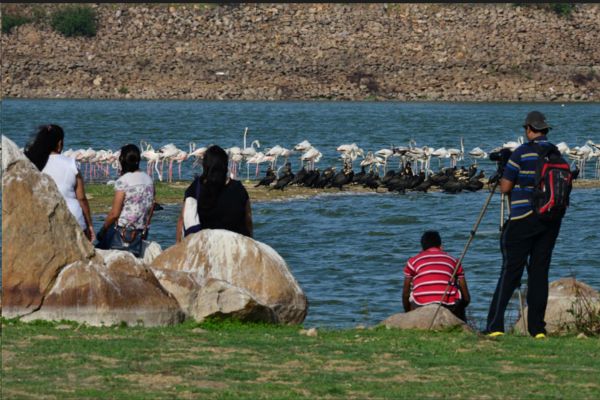Counting our feathered friends
A constant ‘tonk-tonk’, sounding like someone was hammering away at metal had us all rush out of the house. Are you wondering why? Because the noise was made by the coppersmith barbet, a small colourful bird found in India. After a careful search, and often led astray by the ‘tonk-tonk’ that seemed to come from all sides, we spotted the little green and yellow charmer sitting on a branch.
After this, I began to keep a lookout for other birds and spotted quite a few varieties: a sunbird hovering upside down around an aloe flower, the tiny bee eater whose call is quite out of proportion to its size, the Malabar grey hornbill and more. Now don’t get jealous. You can also spot birds in your own backyard.

From February 16 to 19 runs the Great Backyard Bird Count (GBCC). First launched in 1998 by the Cornell Lab of Ornithology and the National Audubon Society in the U.S., the initiative went global in 2013. Birders from India have participated for the last 11 years. According to the Bird Count India website, in 2023, over 4000 Indian birdwatchers participated and identified around 1072 species.
Are you wondering how you can be a part of it?
It’s simple: watch and listen carefully. You don’t have to go to a bird sanctuary or reserve to spot birds. There are plenty of birds you can spot in an urban area as well. Do you live near a lake or a wetland. Ask your parents to take you there and see which birds you can spot. Usually, wetlands are home to many migrant species. A park or patch of greenery around will also be home to many avian species. Spend at least 15 minutes and list all that you see. If you don’t know the species, make a note of the features and then look it up. Who knows? You might have something rare on hand.
Why are initiatives like the GBCC important? Yes, it’s a lot of fun and you’ll get that time in the outdoors, tramping around… all of which is great for mental and physical well-being. But there’s also a scientific side to it. When people take photos of their find and upload it in the eBird app or website, scientists are able to track which birds are found where, if there any changes from previous years and study why this may be so. In India, the GBCC is anchored by the Bird Count India, which is a collective of many different organisations working together for the cause of the birds. Don’t you want to be part of this as well?
Now that you have read about it, here is an activity for you. Here are some birds commonly found in India. Can you spot the right one?